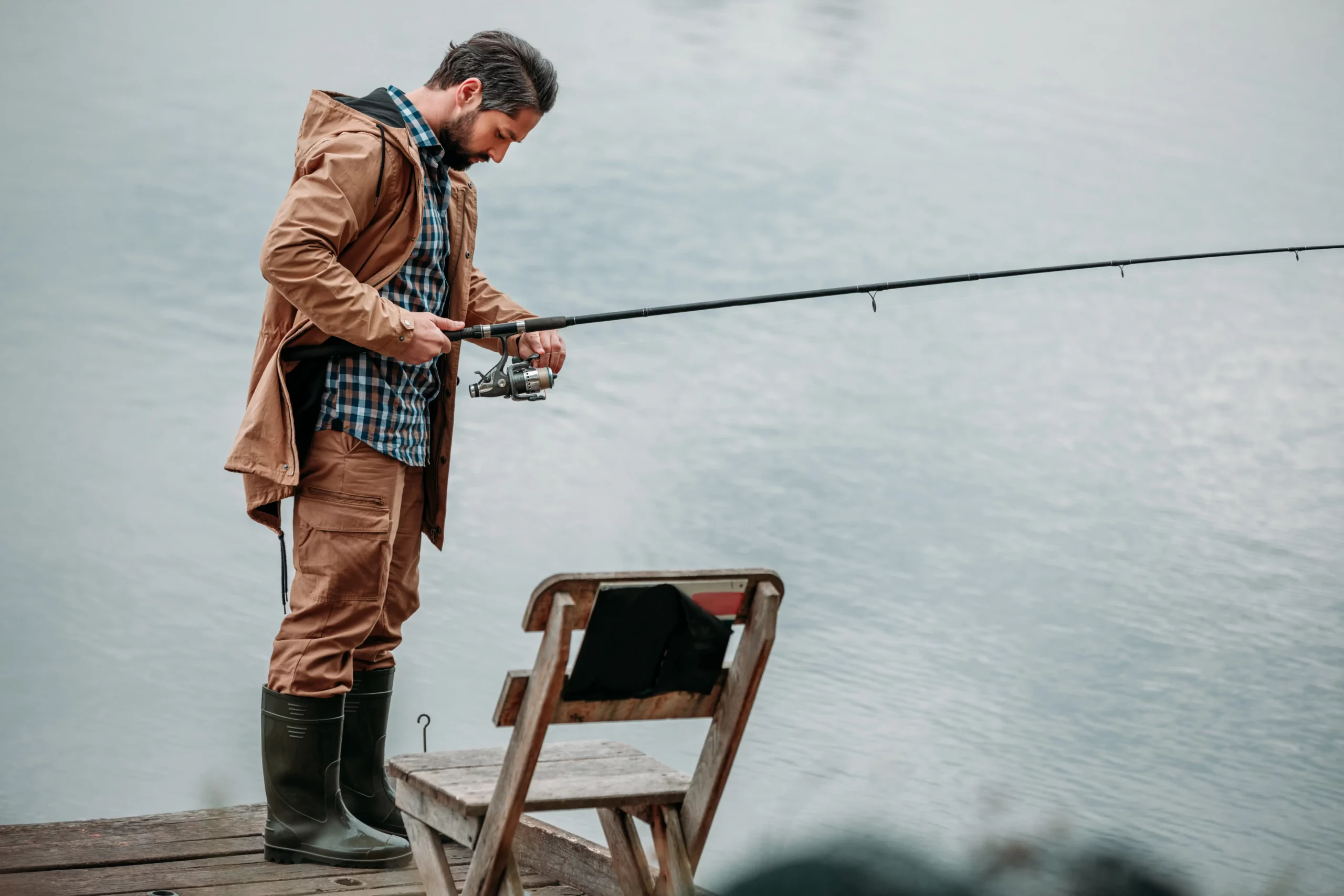The Ultimate Guide to the Fenwick Elite Tech Walleye Rod Series
If you are looking for a high-quality rod that can handle the challenges of walleye fishing, you might want to consider the Fenwick Elite Tech Walleye Rod Series. These rods are designed specifically for light and ultra-light applications, such as jigging, rigging, and trolling for walleye. They are made from 36 and 30-ton graphite, which gives them strength and sensitivity, and they feature titanium frame guides, TAC and cork handles, and hidden handle design reel seats for comfort and performance. In this article, we will review the features, benefits, and drawbacks of the Fenwick Elite Tech Walleye Rod Series, and help you choose the best model for your fishing style and preferences. We will also compare these rods with other popular walleye rods on the market, and give you some tips on how to use them effectively. Whether you are a beginner or an expert walleye angler, you will find this guide useful and informative. Let’s get started!
Features of Fenwick Elite Tech Walleye Rod Series
The Fenwick Elite Tech Walleye Rod Series is a line of fishing rods designed specifically for targeting walleye, a popular game fish in North America. Some of the features of this series are:
- They are made with Powerlux 200 resin technology, which is a material that evenly supports carbon fibers and provides a high strength-to-weight ratio. This means the rods are light, strong, and sensitive.
- They have Fenwick ergonomic reel seats, which are comfortable and secure for the angler’s hands.
- They have premium-grade cork handles, which offer a natural and firm grip in wet conditions.
- They have titanium guides with zirconium inserts, which are durable and reduce friction for smooth casting and retrieving.
- They have a lifetime limited warranty, which covers any defects in materials or workmanship.
The Fenwick Elite Tech Walleye Rod Series has different models for different techniques, such as bottom contact, reaction bait, jigging, rigging, and trolling. Each model has a specific length, power, action, line rating, and lure rating to suit the intended use. The rods are also color-coded by technique for easy identification.
Benefits and Drawbacks of Fenwick Elite Tech Walleye Rod Series
Here are some of the benefits and drawbacks of the Fenwick Elite Tech Walleye Rod Series:
Benefits:
- The rod is designed specifically for walleye fishing, with technique-specific features for jigging, rigging, and trolling.
- The rod is light and sensitive, allowing the angler to detect subtle bites and feel the bottom structure.
- The rod has a decent backbone and power, enabling the angler to set the hook well and fight the fish effectively.
- The rod is well-balanced, comfortable, and durable, with quality components and a smooth finish.
Drawbacks:
- The rod may be a bit stiff for some anglers, especially for lighter lures and softer action.
- The rod may have some quality issues, such as loose or bent parts, that may affect its performance or appearance.
- The rod is relatively expensive compared to some other walleye rods, which may not fit every angler’s budget.
Comparison to other rods in the market
Here is a comparison of the Fenwick Elite Tech Walleye rod with some other popular walleye rods on the market, based on the information I found online:
- St. Croix Legend Tournament Walleye: This rod is very light and sensitive, and has a fast action and a split grip handle. It is designed for various walleye techniques, such as jigging, rigging, and trolling. It also features St. Croix’s patented technologies, such as IPC, ART, and FRS, which enhance the strength, durability, and performance of the rod. This rod is considered the best overall walleye rod by many anglers, but it is also the most expensive one.
- Ugly Stik Elite Spinning: This rod is a classic choice for walleye fishing, as it is durable, balanced, and affordable. It has a composite blank that combines graphite and fiberglass, which gives it more flexibility and forgiveness than a pure graphite rod. It also has a clear tip that adds sensitivity and strength to the rod. This rod is suitable for trolling and casting, but not for jigging, as it lacks the stiffness and responsiveness needed for that technique.
- Fenwick Elite Tech Walleye: This rod is a versatile spinning rod that has a graphite blank and a sensitive tip. It is suitable for lighter water conditions and smaller fish, as it lacks the backbone to handle heavier fish. It has a smooth casting performance and good control over the line. It also has a hidden handle design that reduces weight and improves comfort. This rod is a budget-friendly option for walleye jigging, but it may not be the best choice for rigging or trolling.
- Tica WMVA Bass & Walleye Casting: This rod is a casting rod that has a carbon fiber blank and stainless steel guides. It is strong, responsive, and corrosion-resistant. It has a fast action and a cork handle that provides a good grip and feel. It is suitable for walleye rigging and casting, but not for jigging, as it is too stiff and heavy for that technique. This rod is a budget-friendly alternative to the Ugly Stik Elite, but it may not be as durable or flexible.
- Okuma Dead Eye Walleye Trolling: This rod is a telescopic trolling rod that has a fiberglass blank and a rubber shrink tube handle. It is flexible, forgiving, and easy to store and transport. It has a moderate action and a medium power that can handle most walleye sizes. It is suitable for walleye trolling, but not for jigging or casting, as it lacks the sensitivity and accuracy needed for those techniques. This rod is a budget-friendly option for walleye trolling, but it may not be as strong or responsive as a graphite rod.
Tips and Tricks
Some tips on how to use these rods effectively are:
- For jigging, use a light or medium-light rod with a fast or extra-fast action, as this will give you more sensitivity and responsiveness to detect and set the hook on the walleye’s soft bite. Use a braided line with a fluorocarbon leader for a better feel and less stretch. Use a jig head that matches the depth and current of the water, and a soft plastic or live bait that mimics the walleye’s natural prey. Jig the rod up and down with short and sharp movements, and pause occasionally to let the jig fall and trigger a strike.
- For rigging, use a medium or medium-heavy rod with a moderate or fast action, as this will give you more backbone and power to handle the weight of the rig and the fish. Use a monofilament or fluorocarbon line for better stretch and shock absorption. Use a slip sinker, a swivel, a leader, and a hook or a spinner to create a rig that can be dragged along the bottom or suspended in the water column. Use live bait, such as a leech, a minnow, or a nightcrawler, to attract the walleye. Rig the rod slowly and steadily, and feel for the walleye’s bite, which may be subtle or aggressive.
For trolling, use a medium-heavy or heavy rod with a moderate or slow action, as this will give you more flexibility and forgiveness to handle the stress of the trolling speed and the fish. Use a braided or monofilament line for better durability and abrasion resistance. Use a planer board, a downrigger, a lead core line, or a diving device to control the depth and distance of your lure or bait. Use a crankbait, a spoon, a spinner, or a live bait, such as a minnow or a nightcrawler, to create a presentation that mimics the walleye’s natural prey. Troll the rod at a speed and depth that matches the walleye’s activity level and location, and adjust accordingly to the water conditions and the fish’s behavior.







